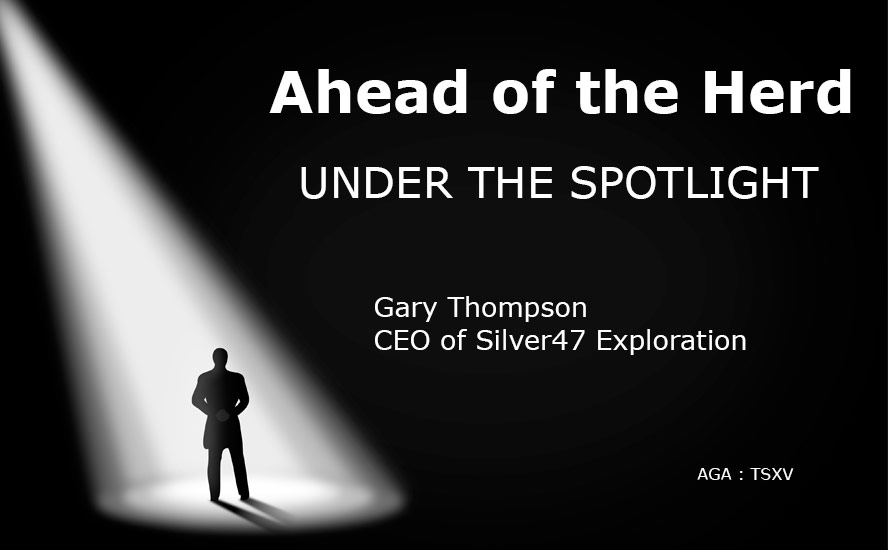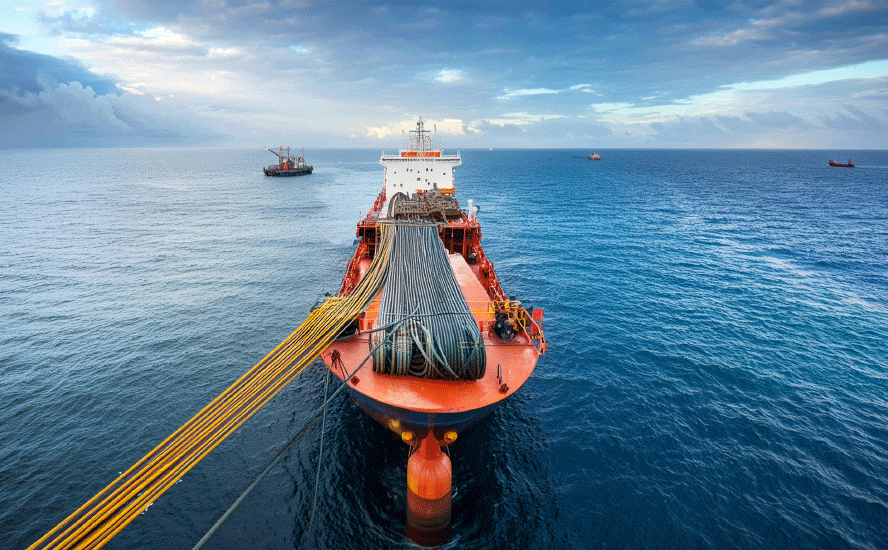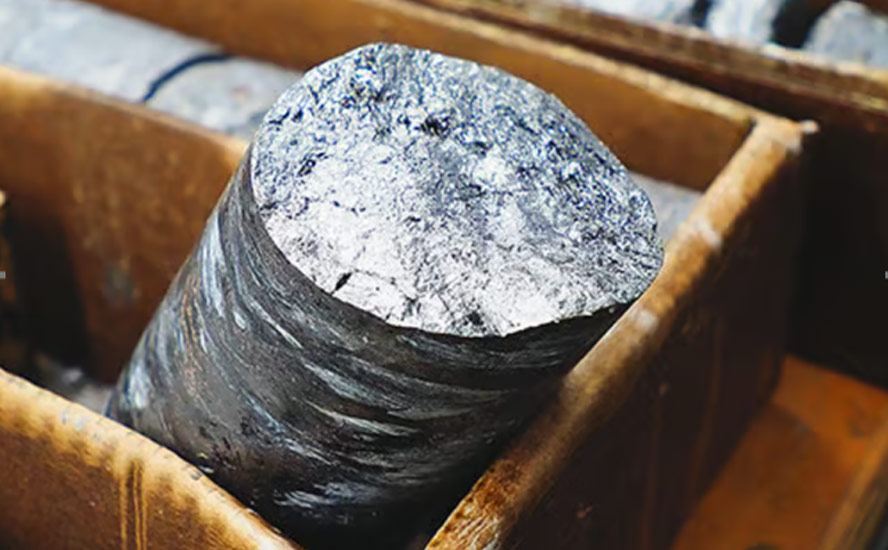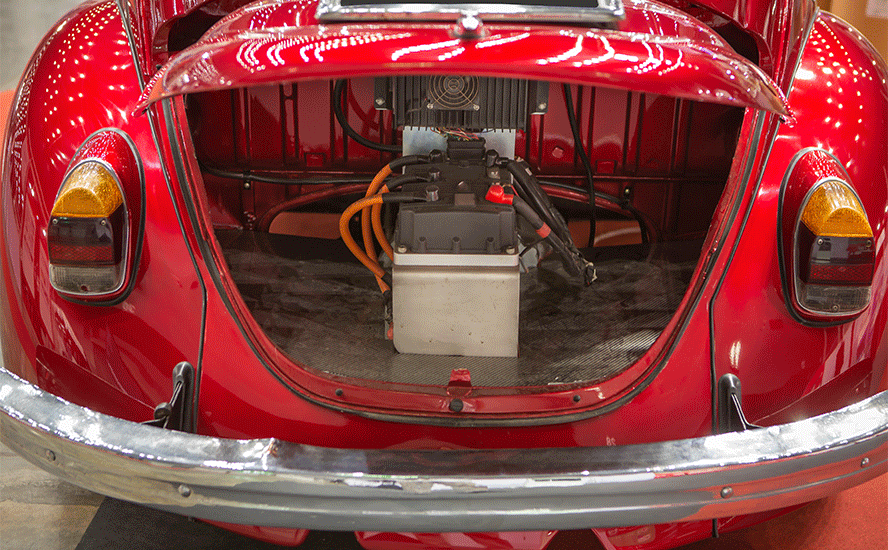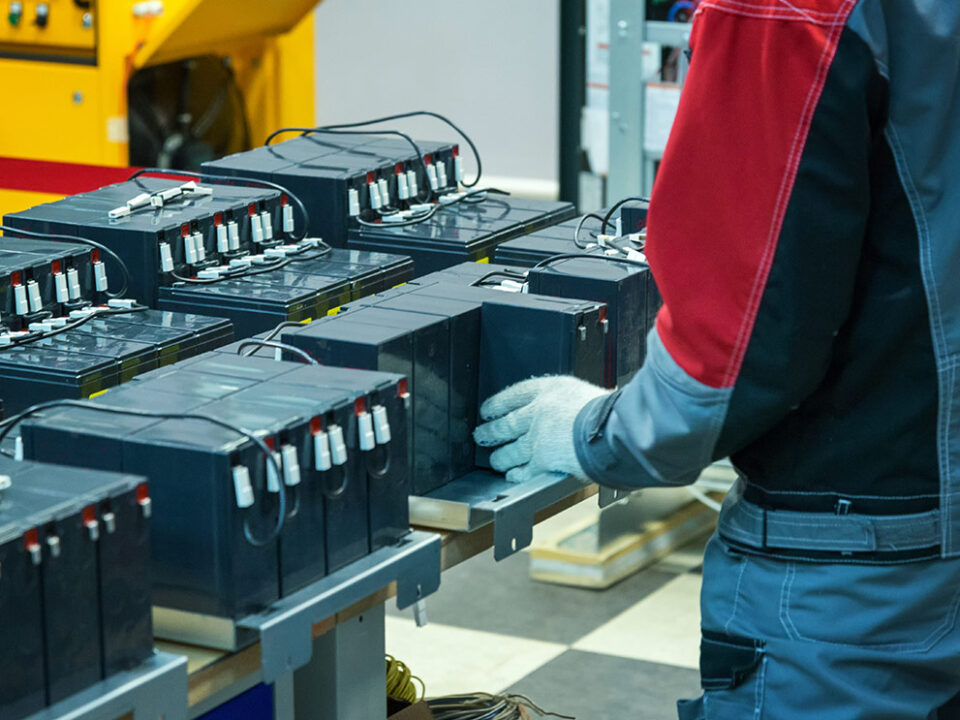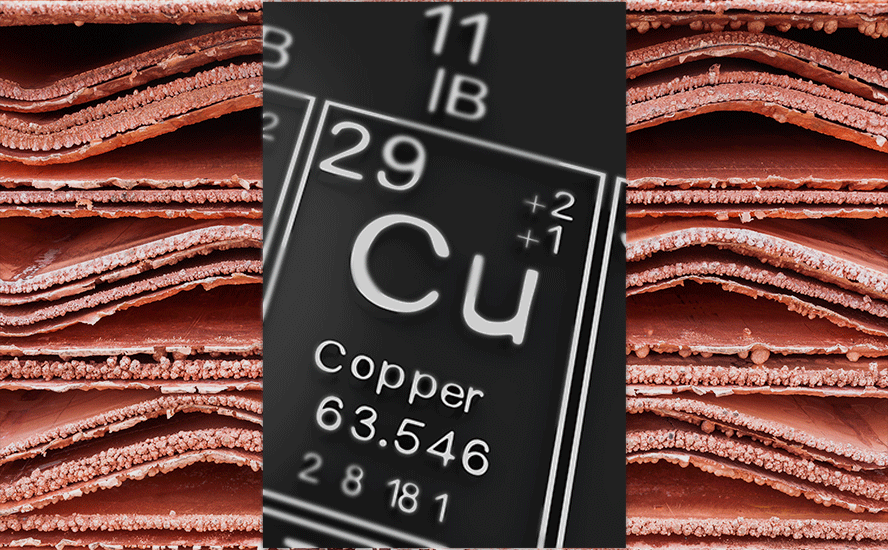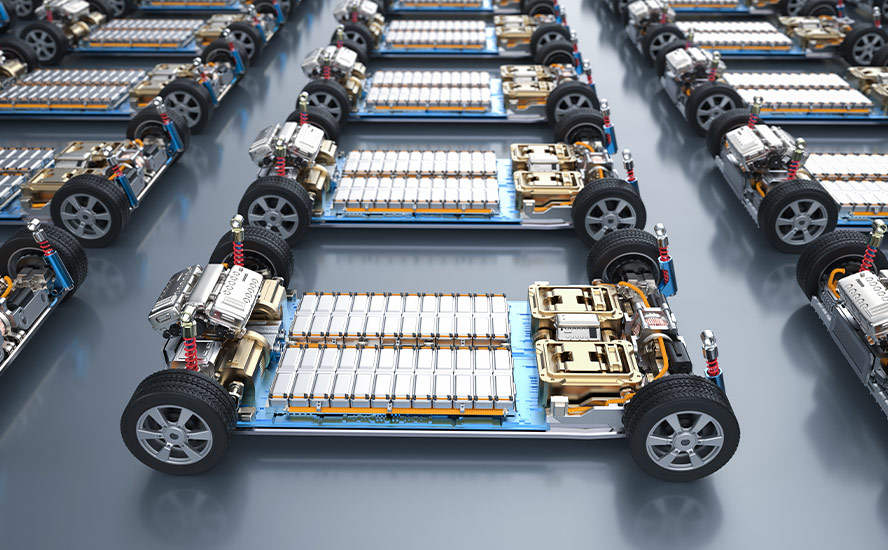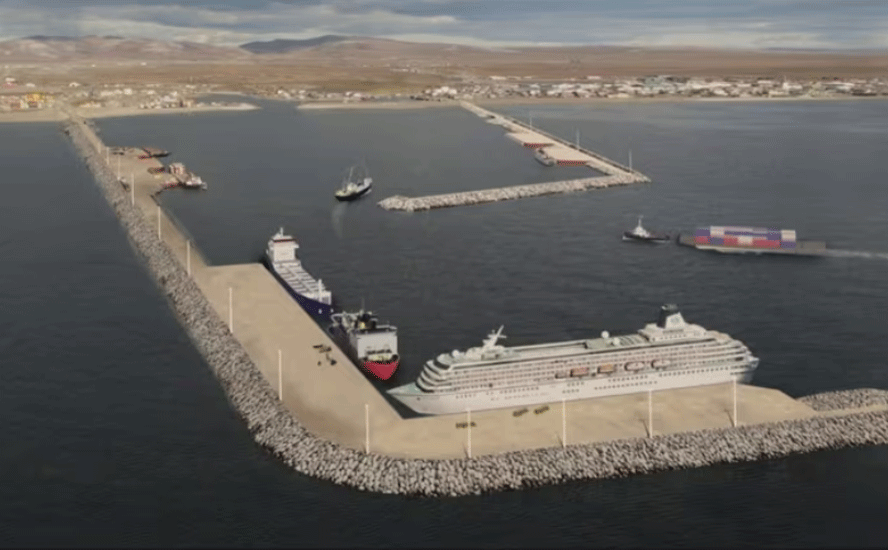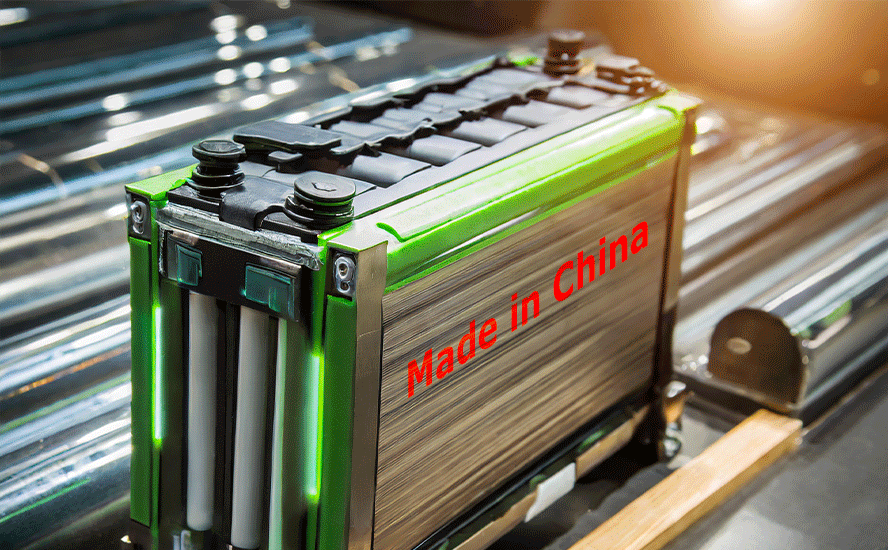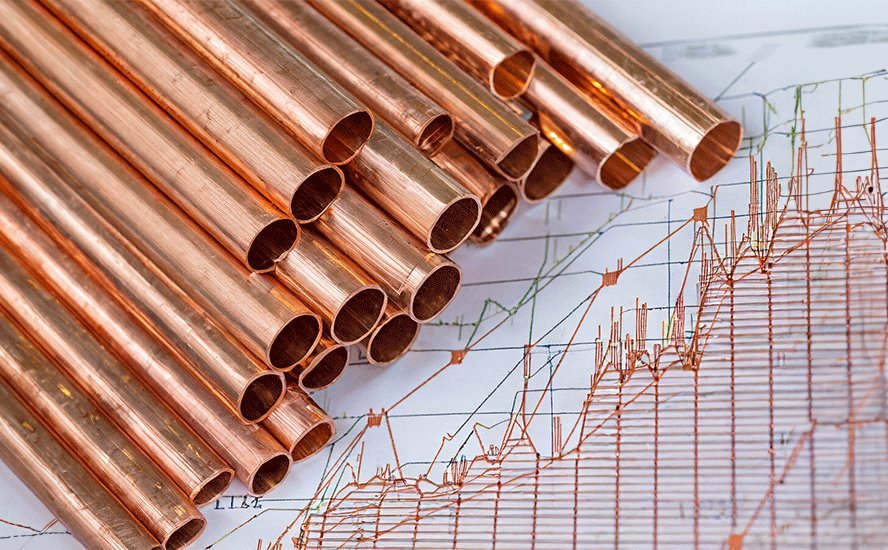Under the Spotlight – Mills, Beale: Pampa Metals
2022.03.26
Rick Mills, Editor/ Publisher, Ahead of the Herd: Today I’m here with Timothy Beale. Timothy’s a Pampa Metals Corp. (CSE:PM, FSE:FIRA), Director, he’s a geologist, he’s got over 20 years living in Argentina, Chile and Peru.
As for Pampa Metals I don’t think I’ve seen a better risk-reward profile in the copper sector and it’s certainly one of the top few in the resource industry. I’ll explain that.
With only 43 million shares outstanding you look at the risk-reward, the risk is, will you lose your money? Will they make a discovery? The reward is, if they do make a major discovery, they have 16 projects each with multiple targets, with such a low outstanding amount of shares, your reward is maximized.
What this company has done in its first year is truly amazing, I mean they’ve got eight 100%-owned copper-gold projects in northern Chile, Austral Gold has joint-ventured two of them, and they’re drilling on one. Pampa has drill-tested two separate projects (four targets) and three are slated for possible follow-up. They’ve signed a deal with VerAI Discoveries to use their artificial intelligence technology and apply it to mineral exploration, and they’ve received access to its eight additional projects.
I think this is truly unique for a risk-reward profile. It gives you, the investor, one of the most bangs for the buck for discovery upside, in the business. Truly outstanding, Tim, could you break it down for us, the different projects and management?
Timothy Beale, Director, Pampa Metals: Pampa has a tight share structure and we’ve done a lot of work in the 13-14 months since inception. The company started with eight wholly owned projects located in the principal copper-producing belts of northern Chile. We’ve focused on projects that have quite extensive areas of post-mineral cover, meaning many of the targets that we’re exploring are actually blind targets.
There is a certain amount of geological evidence in surrounding outcrops, which is important to us and we focus a lot on that, but we also have to apply geophysical technologies to our exploration to see through that post-mineral cover and look at the targets we’re exploring for.
We’ve done extensive geophysical and geological surveys on five of our projects and as you mentioned we drill-tested four targets on two of those projects. Three of those drill targets merit follow-up and in fact we are currently working to put together a drill program on one of those targets.
So we’re working hard, we’re working fast and we’re putting as much money into the ground as we possibly can, and we’re getting good results in the process.
RM: And Austral Gold?
TB: We have two of our projects optioned to Austral Gold, which is actually a producing gold-silver miner in Chile. The two projects that they have optioned from us have the characteristics of the highest portions of the copper systems that we’re generally looking for, and those geological high-level portions of these systems often have the potential for gold and silver.
So that’s why Austral Gold is interested and in order to try and progress as many projects as we can at the same time, we considered it prudent to do the deal with Austral Gold so they could be focusing their money advancing those two projects while we’re advancing the other projects in our portfolio.
About the deal with VerAI, which we just signed in the last month or two, VerAI is an innovative company focused on artificial intelligence technologies, and they are applying artificial intelligence algorithms to certain exploration data sets, principally detailed geophysical data in their case, and coming up with targets of potential interest. We signed a deal with them whereby we have an option to earn into eight projects that they have staked in northern Chile based on their artificial intelligence algorithms, so we’re just starting work on looking at those projects, as we speak.
RM: It’s interesting that the projects are in northern Chile, they look an awful lot like what you guys are already working on.
TB: Yes, another reason for doing the deal with VerAI is their projects are geographically located within the same districts and regions that we’re looking at in northern Chile, so in a general sense very similar geology, something we understand and in areas that we believe are highly prospective.
RM: What do VerAI’s artificial intelligence algorithms show you?
TB: What we see is the results of the application of their algorithms to certain geophysical data sets. They generate targets based on this work that are, if you like, lookalike targets to known mineral deposits in northern Chile. They use local deposits as a modeling set and they look at those known deposits, look at the geophysical data and then apply their algorithms to look for similar areas elsewhere in the data sets they have. And that’s how they generate their targets.
We had an overview of their targets before we signed the deal, we liked the general areas they were located in and the general ideas, so we decided that we would go ahead and explore with them, partner with them.
RM: Can you expand on each of Austral’s joint venture projects, Morros Blancos and Cerro Blanco, just a little bit more on what they’re doing, if they’ve drilled them and what they’re planning on doing this year?
TB: Sure, so with our property portfolio of eight projects, and indeed now double the number of projects with the VerAI option that we have, we simply believe that the more projects, the more targets you have the more chances you have of success.
Prioritization is a key factor so that we’re only spending our money on the very best targets, but nevertheless we’ve got multiple targets which give investors multiple chances of success.
In the case of Austral Gold we essentially have in simple geological terms uneroded porphyry copper systems that in their highest parts have potential for gold and silver. These deposits are called high-sulfidation-type deposits, and they’re typical around the world and particularly in the Andes, where some very important high-sulfidation deposits have been discovered over the last 20-30 years, including Yanacocha in Peru, Alturas in Chile and several others. So these are important deposit types for precious metals.
Austral Gold has completed very detailed geological mapping of our Morros Blancos project and also conducted certain geophysical surveys and some surface geochemical sampling surveys. They have delineated three potential target areas at Morros Blancos and they have started the most detailed work at the northern target which is called Rosario del Alto. They’ve mapped out a series of geological features which are very characteristic of these high-sulfidation-type precious metal systems and they are currently drilling. They started diamond drilling on the Rosario del Alto target at Morros Blancos at the end of January, and have plans to drill around five holes totaling about 2,000m.
Our understanding is currently they’re finishing off hole 2 but we don’t have access to any results at this point. At Cerro Blanco they’ve also conducted detailed surface exploration It’s a very small hill surrounded by these very extensive post-mineral covered areas I mentioned previously, which incidentally are called pampas, hence our name Pampa Metals. They have done surface work on the relatively small outcrops and they have told us that they hope to be drill-testing at Cerro Blanco a bit later this year.
RM: One of the projects that Pampa is working is Cerro Buenos Aires and you’ve done some reverse circulation (RC) drilling in 2021 around the porphyry and the tourmaline breccia, can you explain to us what you found there and what your plans are for that one this year?
TB: You’re absolutely right, Cerro Buenos Aires is another quite large project area, and we have a number of ideas for targets on the property. We focused in initially on a target to the north called Cerro Chiquitin, which is also a relatively small hill poking out of the surrounding post-mineral gravel-filled pampa area, and this hill displays very interesting characteristics as it looks like it’s on the edges of some kind of porphyry system, with tourmaline breccias, a porphyry intrusion with some quartz veinlets in it, which are very characteristic of porphyry systems, and some other characteristics which we found to be very positive for a porphyry system in the near vicinity.
We carried out some very wide-spaced RC drilling, and completed seven holes over an area of about 4.5 km north-south by about 2 km east-west, so you can imagine that the holes were pretty wide-spaced, and we were testing a variety of geophysical anomalies essentially, and some geochemical anomalies, through the cover. We determined that part of the area we tested was not of interest but we are vectoring into what we believe is the core of the system just to the south of the outcrops that I mentioned at Cerro Chiquitin.
We’ve already done a detailed IP survey over that area of interest in January and February of this year and we will be shortly announcing some results from that. We hope to be following up with further diamond drill testing of this much smaller area in the next two or three months.
RM: You’ve paid some serious attention to another project, Block 4.
TB: Yes, Block 4 is for us pretty exciting, it’s rapidly becoming a priority. We did a ground magnetic survey last year similar to what we had done on several of our other properties, and we followed up with detailed geological mapping of the available outcrops but there’s quite a lot of cover at Block 4 as well. Nevertheless, we noticed in the magnetic data a very discrete, isolated magnetic high literally in the geographic center of our property.
Our very keen-eyed senior geologist in Chile, who’s leading the technical work on the ground, found a porphyry intrusion that is very poorly exposed being mostly covered with post-mineral deposits, but small outcrops of this porphyry intrusion are visible and we see very intense quartz veinlet stock working. These quartz veinlets that we see in these porphyries and sometimes in the surrounding host rocks, are very critical and characteristic of these copper porphyry systems that we’re looking for, and this was very exciting to us.
The coincidence of this, with the magnetic high, tells us things about the potential porphyry system we might be looking at here. And it’s interesting to note there’s a bit of historic exploration on the Block 4 property, and the historic exploration has been very limited wide-spaced trenching, with a few old drill holes that we believe date back to the 1980s or ‘90s. We don’t have any results from this work but these old trenches and drill holes were focused on quite a number of little copper oxide occurrences, so we know we have copper mineralization in the general vicinity but the actual porphyry and quartz veinlet stock work zone coincident with magnetic anomaly that we’ve found, has never been drill-tested or trenched or explored historically.
We completed a trenching program at the end of last year and the positive assay results from that trenching program on this quartz veinlet stock work porphyry were announced recently. We believe quite strongly that this Block 4 target is now a target for drill testing. We’re looking at all the permit-related issues for that.
RM: Did you want to talk about the Redondo-Veronica and the Block 3?
TB: Sure. Redondo-Veronica has a little more outcrop than most of our projects but it still has some thin post-mineral cover in certain key areas. We did quite a lot of geophysics over the property, we did certain IP technologies, we did magnetic surveys flown using a drone, actually we were one of the first companies I believe to employ a drown-flown magnetic sensor in Chile, which allows for pretty rapid coverage of the ground but still allows for very detailed surveys, and also completed very detailed geological mapping.
We delineated five areas within the property for potential porphyry copper-style mineralization, a couple of those we felt were somewhat lower rank.
We always have a limit to the funds that we have available, but we did decide to drill-test the other three of those targets. Again we did some wide-spaced RC drilling, one target received one drill hole, one target received two drill holes, and the other target received four drill holes and the closest spacing between the drill holes was about 1 km – 1.5 km. Nevertheless two of those targets returned pretty interesting results, we got some pretty interesting geochemical anomalies, and with the geophysics we’ve had, now we can see a little more in three dimensions from the drill hole results, together with the surface geological mapping and the deeper geophysical anomalies that we have, we believe two of these targets are really worth following up with deeper drilling.
At one of them in particular, Redondo Southwest, our drill holes literally arrived at the peak or the very top of quite an interesting geophysical feature. We believe we just have to drill 200-300m deeper to really investigate what’s going on there. And that too is in our plans. It’s just a question of priorities.
At the moment our Block 4 property and our Cerro Chiquitin target at Cerro Buenos Aires are our principal priorities, but we hope to get back to Redondo-Veronica maybe later this year and follow up on those two targets that we think look pretty interesting.
In the case of Block 3, we’ve done some surface work, again we’ve done a drone-flown magnetic survey, we’ve done detailed geological mapping but again we’ve got lots of post-mineral cover, so we only have little bits of outcrop dotted around, nevertheless it’s hugely important to map these outcrops and understand what they’re telling us about the geology of the general area.
We believe we’ve got a number of magnetic anomalies of potential interest, that might represent potential porphyry targets, a bit like the magnetic anomaly at Block 4 turned out to be. So we’ve got several magnetic features on the Block 3 property that we believe are interesting for potential follow-up, but given the extent of the post-mineral cover at Block 3, we almost certainly have to do an intermediate stage of electrical geophysics, probably induced polarization commonly known as IP, over some of these magnetic features prior to any drill testing.
Again it’s all about prioritization, where do we put Pampa’s funds in terms of getting the biggest bang for our buck in the shortest time frame? All of these projects display tremendous interest for discovery, but we have to prioritize the very best targets so we can use our money wisely.
The most expensive phase of exploration obviously is the drill testing, that’s what our shareholders want to see, they want to see us drilling because you don’t make a discovery until you stick a drill hole into something. That’s obviously a big priority for us and we’re trying to put the drill holes in the best possible places at this time.
I come back a little bit to our portfolio approach. I hope I’ve been able to describe a little bit the multitude of projects and targets that we have in our portfolio, and if we’re given the chance by shareholders to explore as many of these as we possibly can, I’m convinced we’re going to have success down the road.
RM: I agree, I love the approach to multiple projects and working on a couple at a time. The more you work on, the more you’re out in the field, the more you see, the better your chances of discovery.
That brings me around to VerAI, with their AI technology and high-resolution geophysics data generating a series of exploration targets. Now they’ve got eight property blocks, 18,700 hectares, you’ve got 62,000 ha, all in very prospective ground in northern Chile, we’re “elephant hunting”, you’ve made an exclusive option over the next 12 months to define one or more designated projects from the eight property blocks owned by VerAI.
You have to spend some money but you’re getting access to some amazing technology and the potential of earning 51% up to 75% on a prospective property, so you’ve really expanded your discovery potential and your property portfolio.
TB: You’ve absolutely right, Rick. Northern Chile is a region that is very heavily staked, there’s very little ground available for new staking. Much of the ground is controlled by major mining companies, the BHPs, the Rio Tintos, the Anglo Americans, also the state-controlled miner in Chile, Codelco. For a junior company to have access to this amount of ground in such a prospective part of the world is not very common at all, almost unique I would say.
It’s all about optionality. This is not just random ground, this is ground that has clear targets of potential interest that we need to follow up. We’re giving shareholders lots of opportunity, lots of options/ optionality, to make a discovery. We have, with VerAI as you rightly point out, the option to earn up to 75% of any designated target that we choose, so we’ve got a low-cost introduction to their eight properties, we have to spend $500,000 over the next 12 months globally, to review the eight project areas.
We may decide we don’t want to follow up any of them, or we can decide to follow up all eight of them. Or anything in between. Each project we decide to follow up becomes a designated project, we can earn an initial 51% by spending $1 million over the following two years on each designated project and then we can subsequently earn 75% by completing a preliminary economic assessment (PEA) on each designated project. These are very reasonable earn-in terms in our view, and just gives Pampa Metals’ shareholders additional optionality on very prospective parts of the world.
RM: As I said at the start of the interview, the risk-reward profile here is excellent, the low, tight share structure and the multitude of projects in a world-class exploration district. It’s quite a nice play. Do you have anything else you’d like say Tim, in closing?
TB: I think just to say, Rick, that we’re working very hard, we have a pretty small team, a very dedicated team in Chile, we’ve been able to operate all through the pandemic last year, we have a very experienced geologist who I know from my days with Anglo American, a gentleman called Mario Orrego, he’s leading our technical charge in the field, he’s a very experienced porphyry copper geologist and indeed has experience in a number of other mineral deposit types, he’s leading a team doing an excellent job for us down in Chile.
I was in Chile in February, I spent two weeks visiting all of our projects so I’ve got a very clear idea of the quality of the work that’s been done and we’re very happy with our team’s progress. We’re working hard to keep going, keep drill-testing and keep generating new targets and Rick we’re hopeful for success in the short term.
RM: I really wanted to emphasize the potential for discovery with the low share count, it really does reward investors, you make a discovery, you’ve got 43 million shares out, or you make a discovery and you’ve got a quarter billion (shares outstanding). The one I wouldn’t buy, the one I would, I mean what’s the point in buying the company with a quarter billion shares o/s, you could find one of the biggest things in the world and you’re not going to make a lot of money off it.
TB: I think our share structure’s very important, we’re hopeful we can keep it as tight moving forward, obviously new funds will be required at some point to enable us to continue exploring, but we’re working hard to make the share structure attractive to investors and make that discovery.
RM: The transition from exploration to discovery is the biggest wealth-generating stage in the minerals business. What that means to an investor is you need to have the best, and most shots at discovery you can have in one company. Pampa Metals Corp. (CSE:PM, FSE:FIRA), in my opinion, offers that.
TB: That’s it, prioritization of targets, joint ventures, boots on the ground, never stop looking for that discovery, that’s exactly what it’s all about.
RM: As always, entertaining and enlightening. I enjoyed our talk Tim and I hope we get to do it again soon.
Pampa Metals Corp.
CSE:PM, FSE:FIRA
Cdn$0.34, 2022.02.09
Shares Outstanding 43.4m
Market cap Cdn$14.7m
PM website
Richard (Rick) Mills
aheadoftheherd.com
subscribe to my free newsletter
Legal Notice / Disclaimer
Ahead of the Herd newsletter, aheadoftheherd.com, hereafter known as AOTH.
Please read the entire Disclaimer carefully before you use this website or read the newsletter. If you do not agree to all the AOTH/Richard Mills Disclaimer, do not access/read this website/newsletter/article, or any of its pages. By reading/using this AOTH/Richard Mills website/newsletter/article, and whether you actually read this Disclaimer, you are deemed to have accepted it.
Any AOTH/Richard Mills document is not, and should not be, construed as an offer to sell or the solicitation of an offer to purchase or subscribe for any investment.
AOTH/Richard Mills has based this document on information obtained from sources he believes to be reliable, but which has not been independently verified.
AOTH/Richard Mills makes no guarantee, representation or warranty and accepts no responsibility or liability as to its accuracy or completeness.
Expressions of opinion are those of AOTH/Richard Mills only and are subject to change without notice.
AOTH/Richard Mills assumes no warranty, liability or guarantee for the current relevance, correctness or completeness of any information provided within this Report and will not be held liable for the consequence of reliance upon any opinion or statement contained herein or any omission.
Furthermore, AOTH/Richard Mills assumes no liability for any direct or indirect loss or damage for lost profit, which you may incur as a result of the use and existence of the information provided within this AOTH/Richard Mills Report.
You agree that by reading AOTH/Richard Mills articles, you are acting at your OWN RISK. In no event should AOTH/Richard Mills liable for any direct or indirect trading losses caused by any information contained in AOTH/Richard Mills articles. Information in AOTH/Richard Mills articles is not an offer to sell or a solicitation of an offer to buy any security. AOTH/Richard Mills is not suggesting the transacting of any financial instruments.
Our publications are not a recommendation to buy or sell a security – no information posted on this site is to be considered investment advice or a recommendation to do anything involving finance or money aside from performing your own due diligence and consulting with your personal registered broker/financial advisor.
AOTH/Richard Mills recommends that before investing in any securities, you consult with a professional financial planner or advisor, and that you should conduct a complete and independent investigation before investing in any security after prudent consideration of all pertinent risks. Ahead of the Herd is not a registered broker, dealer, analyst, or advisor. We hold no investment licenses and may not sell, offer to sell, or offer to buy any security.
Richard does not own shares of Pampa Metals Corp. (CSE:PM). PM is a paid advertiser on his site aheadoftheherd.com
Legal Notice / Disclaimer
Ahead of the Herd newsletter, aheadoftheherd.com, hereafter known as AOTH.Please read the entire Disclaimer carefully before you use this website or read the newsletter. If you do not agree to all the AOTH/Richard Mills Disclaimer, do not access/read this website/newsletter/article, or any of its pages. By reading/using this AOTH/Richard Mills website/newsletter/article, and whether you actually read this Disclaimer, you are deemed to have accepted it.


